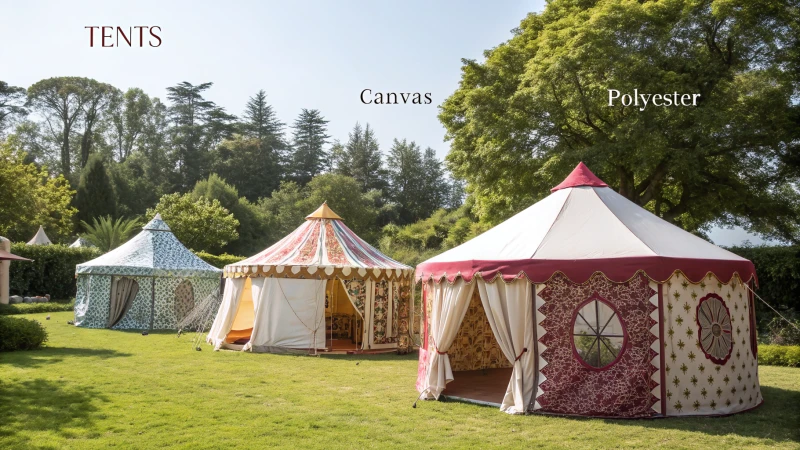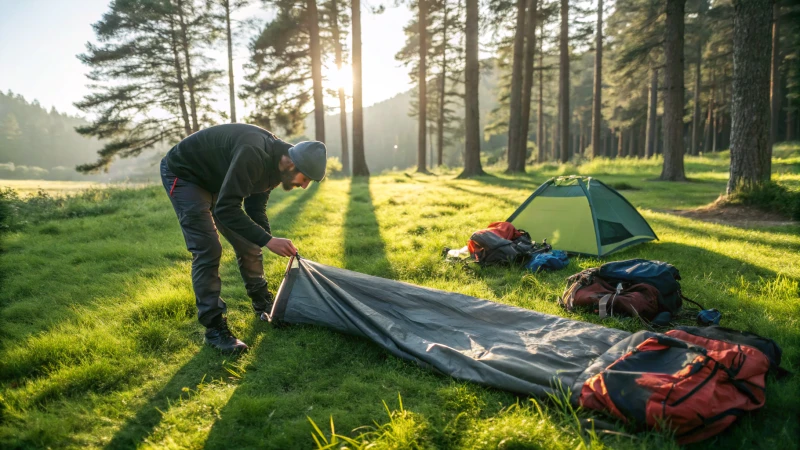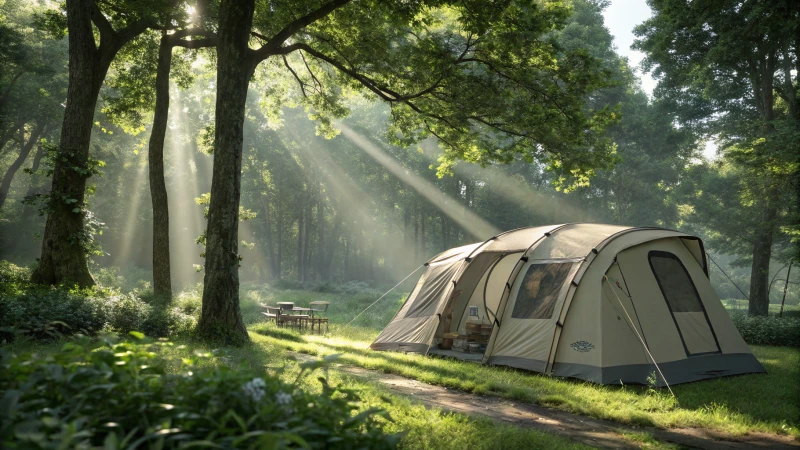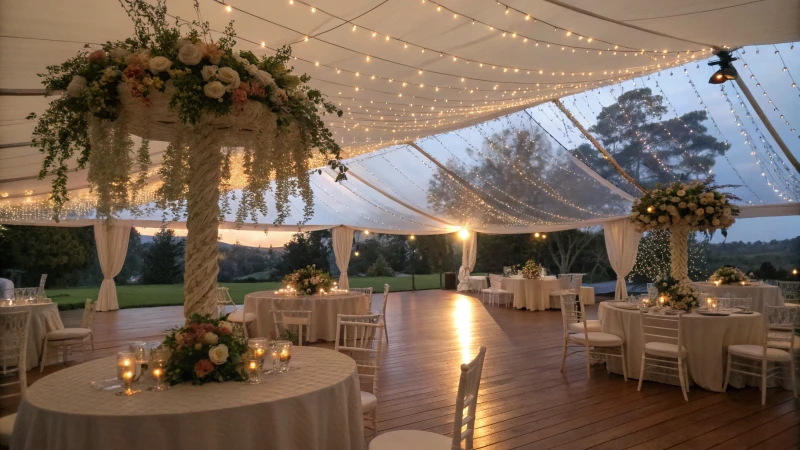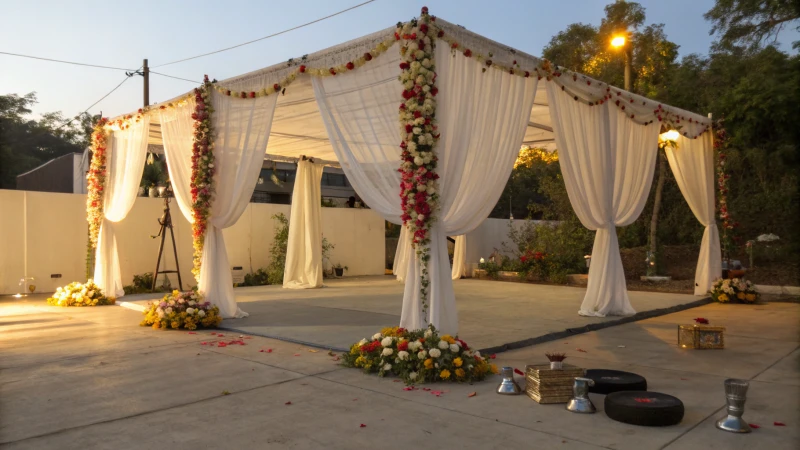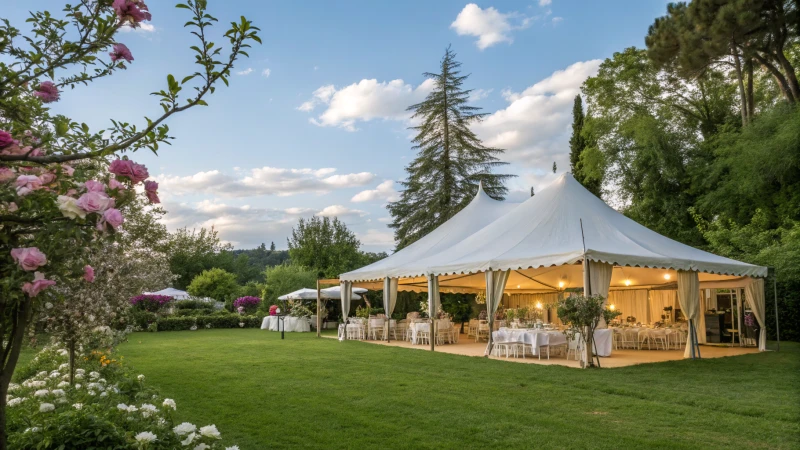
There’s something magical about hosting an event under the stars, but finding the perfect tent can be a daunting task.
To hire a tent for outdoor use successfully, you should consider factors like the tent’s size, type, and suitability for expected weather conditions. Also, think about any extra comforts you might need. It’s smart to get quotes from multiple suppliers and clarify what services are included.
Whenever I plan an outdoor event, the tent becomes my top priority. I remember a time when I almost overlooked the wind forecast and ended up with a real-life kite instead of a stable shelter. That taught me to dive deeper into the details, like ensuring the tent can withstand weather surprises and checking if the rental includes setup and breakdown services. Let’s explore these crucial considerations to ensure your event is seamless and enjoyable.
Size is the most important factor when hiring a tent.True
Choosing the right size ensures adequate space and comfort for guests.
Weather conditions do not affect tent selection.False
Weather impacts material choice and setup to ensure safety and comfort.
How Do I Determine the Right Tent Size for My Event?
Planning an event feels like assembling a puzzle, and choosing the right tent size is a crucial piece. Let’s figure it out together!
To find the right tent size, assess your event type, guest count, and layout needs. Use a tent size calculator or consult with rental experts for precise measurements.
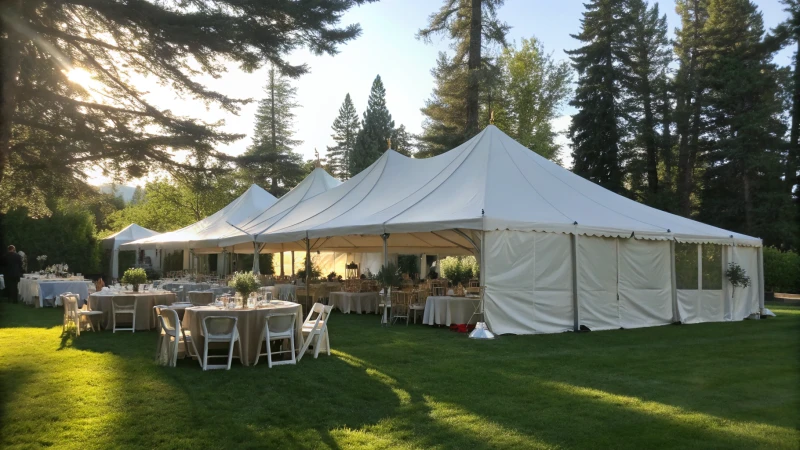
Factors to Consider When Choosing Tent Size
When I was planning my sister’s outdoor wedding, I quickly realized that the tent size was more than just a number—it was about creating the right atmosphere. The first thing I did was consider the guest list. A seated dinner, I learned, requires more space per person compared to a cocktail party. Here’s a simple guide I found incredibly useful:
| Event Type | Space Per Person |
|---|---|
| Seated Dinner | 10-12 sq. ft |
| Cocktail Party | 6-8 sq. ft |
| Theatre Seating | 8-10 sq. ft |
And don’t forget about extra space for things like dance floors or stages! Using a tent size calculator1 helped me visualize everything before making a decision.
Understanding Different Tent Configurations
Choosing between different tent configurations was another learning curve. Each type—frame tents, pole tents, clear-span tents—offers unique benefits.
- Frame Tents: Versatile, no center poles.
- Pole Tents: High peaks, perimeter stakes needed.
- Clear-span Tents: Wide open spaces, ideal for large gatherings.
I found that understanding these options helped align our choice with both the venue’s constraints and our vision for the day.
Consulting with Tent Rental Experts
One of the best decisions I made was reaching out to tent rental experts early on. Their insights based on past events similar to mine were invaluable. They guided me through custom layouts, weather considerations, and installation logistics. Check out this tent rental guide2 for more expert advice.
Utilizing Tent Size Charts and Calculators
Lastly, utilizing tent size charts and calculators was a game-changer. These tools helped estimate the tent size based on our specific needs—like table arrangements and buffet stations—taking the guesswork out of the equation. For instance, a 40×60 frame tent was perfect for our cocktail-style setup but needed adjustments when we considered adding a live band area.
I highly recommend trying a tent size chart3 to visualize different layouts before making your final choice. It’s all about making informed decisions to ensure your event is both comfortable and memorable.
A seated dinner requires 6-8 sq. ft per person.False
A seated dinner requires 10-12 sq. ft per person, not 6-8.
Clear-span tents offer unobstructed interior space.True
Clear-span tents have no interior poles, providing open space.
How do I choose the right tent for different weather conditions?
I remember my first camping trip where the weather turned unexpectedly, teaching me the importance of picking the right tent for the elements.
A three-season tent is perfect for spring, summer, and fall camping, providing excellent ventilation and rain protection. For winter or extreme conditions, a four-season tent is a must, with its sturdy build and insulation against cold and wind.

Understanding Tent Types for Different Seasons
Choosing the right tent isn’t just about grabbing the first one you see on sale. It’s about crafting the perfect haven that matches the weather you’re diving into. Here’s how I break it down:
| Tent Type | Best For | Key Features |
|---|---|---|
| Three-season | Spring, summer, fall | Lightweight, breathable, good ventilation |
| Four-season | Winter or extreme weather | Heavy-duty fabric, additional poles, minimal mesh |
| Convertible | Year-round use | Adjustable features for varying conditions |
Three-Season Tents
Ah, the classic three-season tent! Picture this: I’m on a spring hiking trip, the sun is shining just right, and my backpack feels lighter thanks to this tent. These are perfect for spring, summer, and fall adventures. They let in fresh breezes with their large mesh panels while keeping rain at bay. It’s like carrying your little breathable sanctuary wherever you go. But don’t expect them to tackle heavy snow or extreme cold.
If you’re planning something similar, a three-season tent4 should definitely be on your checklist.
Four-Season Tents
The rugged cousin in the tent family, a four-season tent is what I reach for when venturing into snowy realms or braving high winds. These tents are like a fortress against winter’s wrath, with robust fabrics and sturdy poles to support snow loads. They hold warmth better than their breezier counterparts, which is a blessing when the temperature drops but can mean less airflow.
For those winter warriors out there, investing in a four-season tent5 is absolutely essential.
Convertible Tents
Flexibility is key with convertible tents. Imagine having a tent that adapts like a chameleon—detachable panels for adjusting ventilation or insulation. This kind of versatility is gold if you’re like me and hate committing to just one season’s adventures.
A convertible tent6 might be just what you need if you’re not ready to own multiple tents for all your escapades.
Additional Considerations
- Tent Material: Durability and waterproofing are non-negotiables.
- Ventilation: Essential to prevent condensation in both hot and cold climates.
- Setup Time: Choose based on your patience level; some tents are easier than others.
Selecting the right tent is about knowing your needs and preparing for Mother Nature’s unpredictability. I always dig into expert reviews and guides tailored to our outdoor community for deeper insights. Each trip is different, and being prepared with the right gear makes all the difference.
Three-season tents are suitable for winter camping.False
Three-season tents lack the insulation and support needed for winter conditions.
Convertible tents can be adjusted for different weather conditions.True
Convertible tents have features like detachable panels for varied climates.
What Accessories Can Transform My Tent Camping Experience?
Camping under the stars is magical, but what if I told you there’s a way to elevate that experience with just a few key accessories?
To elevate your camping adventure, consider packing essentials like a ground tarp, plush sleeping pads, portable lighting, and a trusty tent repair kit. These additions ensure comfort, safety, and a touch of luxury in the great outdoors.
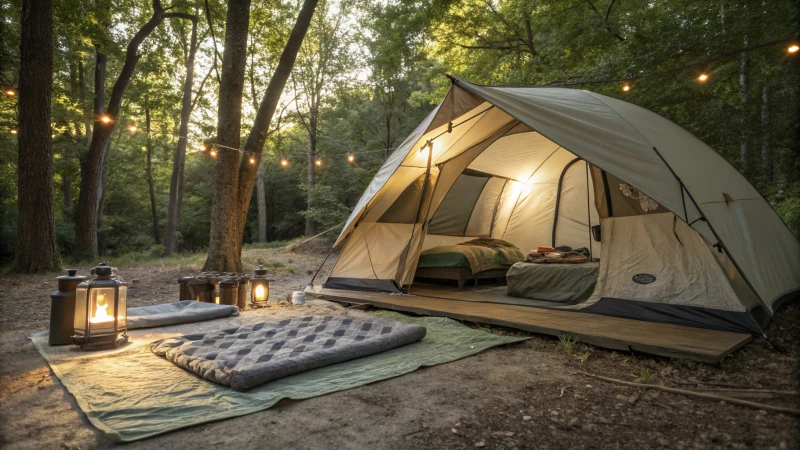
Comfort and Protection
One of my most memorable camping trips was nearly ruined by a surprise downpour, leaving us with a soggy tent floor. That’s when I learned the value of a ground tarp. It’s like giving your tent a protective raincoat, shielding it from moisture and those annoying sharp twigs.
Sleeping under the stars should feel like a dream, not a battle against the cold, hard ground. I’ve found that investing in comfortable sleeping pads can make all the difference. It’s like carrying a slice of home comfort to the wild, paired perfectly with a cozy sleeping bag for those chilly nights.
Lighting Solutions
Navigating the wilderness after sunset can be tricky without proper lighting. On one trip, my friend brought along some nifty LED lanterns and string lights, turning our campsite into a warm, inviting oasis. If you love being eco-conscious like I do, solar-powered lanterns7 are an excellent choice—no need to fret about batteries running out!
Maintenance and Repairs
I’ve learned the hard way that emergencies don’t send invitations. A sudden gust snapped a tent pole on one trip. Now, I always carry a tent repair kit stocked with patches, seam sealants, and spare poles. It’s like having an insurance policy for your adventure.
Organization and Storage
Keeping things tidy in a tent can be challenging. I’ve started using hanging organizers and gear lofts, which have been game-changers in keeping clutter off the floor. For safeguarding valuables from curious critters or unexpected weather, a lockable security box is invaluable.
Enhancing Shelter
Nothing beats sipping coffee under an awning or canopy as the rain gently falls around you. It extends your living space outside the tent, creating a perfect spot for meals or relaxing. Windbreaks are also great for keeping your cooking area safe from unexpected gusts.
Leisure and Luxury
Adding a touch of luxury to camping can be as simple as bringing along camping chairs with cup holders for that morning brew or evening wine. And who knew a foldable table could turn meal prep into such a delightful experience?
For those moments when I want to indulge in glamping vibes, I’ve tried glamping accessories8 like inflatable sofas or hammocks. They’re perfect for lounging under the open sky, making every moment unforgettable.
These thoughtful accessories don’t just add comfort—they transform an ordinary camping trip into an extraordinary adventure filled with memories to cherish.
A ground tarp protects the tent floor from moisture.True
Ground tarps act as barriers against moisture and sharp objects.
Portable LED lanterns are not suitable for camping.False
LED lanterns efficiently illuminate campsites, ideal for camping.
How Can I Negotiate Better Rates with Tent Suppliers?
Ever found yourself staring down the barrel of an event budget, wishing you could work some magic to reduce those costs?
To negotiate better rates with tent suppliers, I start by researching multiple vendors, understanding market pricing, and clearly communicating my needs. I leverage volume discounts, build long-term relationships, and consider off-peak rentals.

I remember planning my first major event—nervous excitement mixed with a touch of dread as I faced the mountain of costs. But through some strategic maneuvering and a touch of luck, I managed to trim down those expenses significantly.
Research Multiple Vendors
The first thing I did was gather quotes from a range of tent suppliers. It’s like comparison shopping but for tents! This helped me understand the market pricing standards9 and spot competitive offers. Beyond just the numbers, I dug into each vendor’s reputation, material quality, and service reliability. It’s amazing what a little research can uncover.
| Supplier | Tent Type | Base Rate | Additional Costs |
|---|---|---|---|
| Supplier A | Frame Tent | $2,000 | $500 (Installation) |
| Supplier B | Pole Tent | $1,800 | $300 (Delivery) |
| Supplier C | Clear-Span Tent | $2,500 | $400 (Setup) |
Understand the Market Pricing
Arming myself with knowledge of market trends and standard pricing put me in a strong bargaining position10. Knowing what others were paying gave me the confidence to question any pricing discrepancies I encountered.
Communicate Your Needs Clearly
I’ve learned the hard way that clarity is key. Whether it’s a clear-span tent or a marquee, detailing my requirements upfront has always reduced the chance of surprise charges later. Asking for itemized quotes ensures transparency in all costs.
Leverage Volume Discounts
For those times when I planned multiple events or needed several tents, discussing potential bulk discounts11 became essential. Most suppliers are willing to negotiate reduced rates for larger orders.
Build Long-Term Relationships
Building long-term partnerships with suppliers can result in better rates over time. I showed loyalty through repeat business and negotiated for exclusive discounts, creating win-win situations.
Consider Off-Peak Rentals
Timing truly is everything. Renting during off-peak seasons or mid-week can lead to significant savings. I always ask about seasonal offers12 or discounts for mid-week rentals—it never hurts to inquire!
Negotiation Techniques
Engaging in open dialogues with suppliers has been invaluable. Techniques like anchoring (starting with a low bid) or exploring non-monetary concessions such as extended payment terms have often worked in my favor.
Tip: Always be polite and professional during negotiations. Respectful communication has often yielded the best results.
Navigating the intricacies of negotiation has allowed me to manage budgets effectively while ensuring high-quality tent solutions for my events. With a little patience and strategy, securing favorable terms becomes less daunting and more of an exciting challenge.
Researching multiple vendors helps identify competitive offers.True
Comparing quotes from various suppliers reveals market standards and options.
Off-peak rentals do not affect tent rental costs.False
Renting during off-peak times often results in cost savings.
Conclusion
Discover essential tips for hiring outdoor tents, including size selection, weather considerations, and negotiation strategies to ensure a successful event under the stars.
-
This link provides access to tools that help calculate tent size based on event specifics, ensuring accurate planning. ↩
-
Exploring this guide offers valuable advice on collaborating with rental experts to streamline your event setup process. ↩
-
Discover visual aids and charts that facilitate understanding of how different tent sizes fit varying event needs. ↩
-
Learn about three-season tents’ benefits in mild weather conditions for optimal comfort. ↩
-
Discover why four-season tents are essential for winter expeditions due to their sturdy design. ↩
-
Understand how convertible tents provide flexibility for year-round camping adventures. ↩
-
Solar-powered lanterns are efficient and eco-friendly, providing reliable light without needing frequent battery changes. ↩
-
Exploring glamping accessories can elevate your camping experience, adding elements of luxury and relaxation to your adventure. ↩
-
Understanding pricing standards helps identify competitive offers and strengthen negotiation strategies. ↩
-
Knowing how to position yourself in negotiations can give you an advantage in securing better deals. ↩
-
Exploring bulk discount strategies can lead to cost savings when ordering large quantities. ↩
-
Finding seasonal offers can provide opportunities to secure tents at reduced rates during off-peak times. ↩


